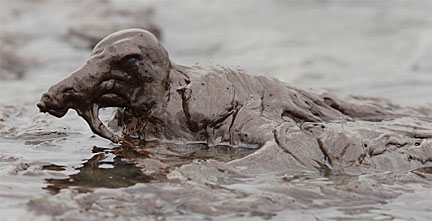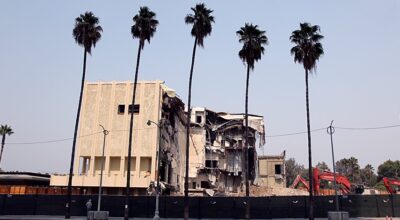BP, LACMA, & the Gulf Oil Spill

With scarcely any coverage on TV news, multinational oil company BP pleaded guilty on Nov. 15, 2012 to 14 criminal charges related to the death of 11 oil rig workers and the corporation having spilled over 200 million gallons of crude oil into the Gulf of Mexico in 2010. BP agreed to pay $4.5 billion in penalties for the Deepwater Horizon oil spill disaster, the biggest fine in U.S. history for the largest ecological catastrophe in U.S. history.
From a strictly monetary perspective, BP’s oil spill caused tens of billions of dollars in economic and environmental damage, but really, what are the lives of 11 oil rig workers actually worth in dollars? What is the true cost of the destroyed fishing industries that once thrived in the Gulf of Mexico? What dollar amount does one attach to the 68,000 square miles of ocean that BP covered in a massive oil slick? How does one put a price on the more than 6,000 seabirds, 600 turtles, and 500 dolphins found dead as a result of the spill? For answers to those questions, ask Michael Govan, the Director of the Los Angeles County Museum of Art (LACMA).
In 2007 Michael Govan accepted a $25 million “donation” from BP on behalf of LACMA, stating publicly that the oil giant was a “green company”. After naming the entry way of LACMA’s newly renovated campus “The BP Grand Entrance”, Govan told the Los Angeles Times that he had accepted BP’s money since: “What was convincing to me was their commitment to sustainable energy (….) We won’t make the transition without the help and cooperation of these major corporations.” To this day Govan has not made a single public statement about BP’s Gulf of Mexico disaster.
In the Nov. 15, 2012 announcement, BP pleaded guilty to 11 felony counts and three misdemeanor counts, one of which included the obstruction of the U.S. Congress. Separate and multiple damage claims are currently being sought against BP by several Gulf Coast states and private plaintiffs. Dead or dying seabirds and sea creatures are still being found in the Gulf. Recent new reports note that two million gallons of a chemical dispersant called Corexit used by BP to “clean up” the spill, mixed instead with the oil to become a “chemical cocktail” 52 times more toxic than the oil by itself. The toxic brew led to a massive die-off of microscopic aquatic animals that form a large part of the Gulf food chain. The impact on wildlife is incalculable. There is some evidence that BP’s “capped” undersea oil well continues to leak crude into the Gulf.
When making the Nov. 15th admission of guilt, Bob Dudley, chief executive of BP, said the oil company took “responsibility for our actions”, and that “since the spill, we have worked hard to rebuild confidence in the company”. To that reprehensible task, it appears that LACMA’s Michael Govan continues to lend his complete and unconditional support.


